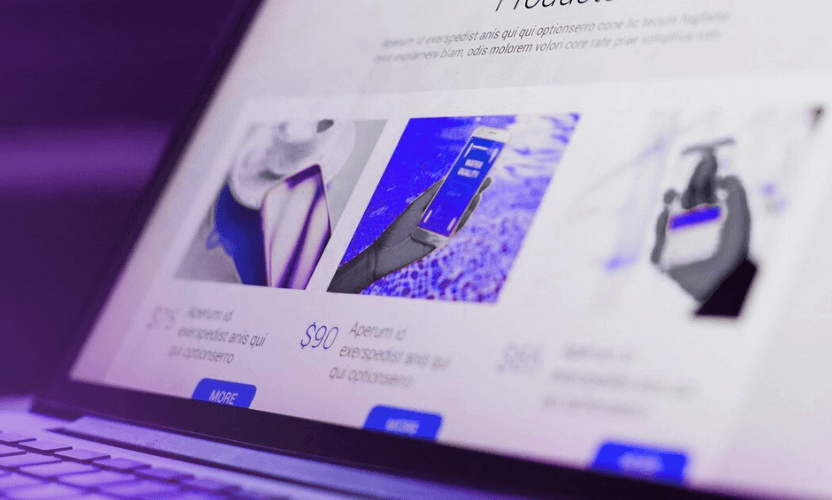Despite many attempts to curb the issue, with initiatives such as Amazon Project Zero and Brand Registry, Amazon still has a significant problem with counterfeit products and copycat goods infiltrating their marketplace.
Spotting a fake on Amazon can be heartbreaking, especially when you’ve spent time and money registering your patent, IP or trademark and following copyright law. Even more so during a time when for a lot of us, sales are low. But, what can be done about it? Plenty! This guide will talk you through exactly how to remove that brand-infringing product on Amazon.
There are many types of intellectual property infringement, that classify Amazon fakes in 5 key ways:
- Copyright Infringement
- Trademark Infringement
- Counterfeiting
- Design or US Design Patent Infringement
- Patent or US Utility Patent Infringement
What you will need
What you need depends on how you are being infringed and what you are trying to report. While for Amazon you do not need to submit a copy of your Intellectual Property certificate, you will need to have the registration numbers or proof of ownership to hand.
Registration numbers are required for Trademark, Design and Patent infringement reports and can be found on your certificates. For registered copyright reports, a registration number is not required. However, if you have one, including it in your application will only strengthen it. Additionally, we suggest including a link to a place where your original copyright/artwork can be found.
As well as this, you will need to provide Amazon with:
- Brand name – this should be the name that is registered on your certificates.
- Personal details – this includes your contact details and address
- Relationship to IP – you will need to tell Amazon whether you are the owner of the IP or a representing agent working on behalf of the IP owner.
- The ASIN or URL of the infringing products – the ASIN (Amazon Standard Identification Number) can be found within the URL, usually the 10 characters after amazon.com/dp/
Reporting an Amazon Fake or Brand Infringement
- Once you have identified the type of IP being infringed and gathered the required information, you are ready to submit your report to Amazon. Simply follow the steps below to get started.
Step 1. Head to Amazon’s IP Infringement Report Page
This page varies depending on which version of Amazon the infringing product is being sold on. For most territories, the infringement page can be found by adding ‘/report/infringement’ to the end of the URL.
We have provided the links to the Infringement Report Pages for the main Amazon domains below:
- UK – Amazon Infringement Report
- US – Amazon Infringement Report
- Canada – Amazon Infringement Report
- France – Amazon Infringement Report
- Germany – Amazon Infringement Report
- Spain – Amazon Infringement Report
- Italy – Amazon Infringement Report
- The Netherlands – Amazon Infringement Report
- Sweden – Amazon Infringement Report
- Poland – Amazon Infringement Report
- Japan – Amazon Infringement Report
- China – Amazon Infringement Report
- Singapore – Amazon Infringement Report
- Turkey – Amazon Infringement Report
- India – Amazon Infringement Report
- Australia – Amazon Infringement Report
- Brazil – Amazon Infringement Report
- Mexico – Amazon Infringement Report
- Saudi Arabia – Amazon Infringement Report
- UAE – Amazon Infringement Report
Unfortunately, reporting a URL on one domain will have no effect on the same URL on another domain. You will have to submit separate reports on the different sites.
Step 2. Create an Amazon account, or sign in if you already have one
If you already have an Amazon account, as a seller or even a buyer, you will not need to create a new one for this. To create an account, you will need to provide a name, an email address, and a strong password.
Step 3. Fill out the Allegation of Infringement
This forms the first part of the submission and is where you outline the nature of the alleged brand infringement as well as proof of your intellectual property.
Step 3.1 Declare whether you are the IP owner or a registered agent
Step 3.2 Select the type of IP complaint
Firstly, you will need to select your primary complaint. Your options here will vary depending on which Amazon domain you are on; however, most should display the following options:
- Copyright concerns
- Trademark concerns
- Patent concerns
- Design right concerns
- Other concerns
If the option you want does not appear, select ‘Other’, and write in the box what kind of infringement you are reporting.
Once you have selected your primary concern, you are then asked to specify further. Choose the option that closest matches your issue. If you previously selected ‘Other concern’, this secondary field will not appear.
Step 3.3 Provide your Brand and IP Details
Next, fill in your brand name or, if appropriate, your registered trademark.
The form then asks for your registration number or patent number – this will depend on what you selected as your primary concern. You can only enter one registration number per complaint, so if you need to report infringements on several trademarks you will need to do this in separate submissions.
If you select copyright as your primary concern, the form will ask you to describe it or provide a link. This could be a link to your website where your work is featured or even a post on your Instagram account. If your copyright is registered, you can add this information too.
Step 3.4 Add in as much additional information as possible
There is also the option to add additional information. We highly recommend that you provide as much evidence as you can about the infringement. Outline exactly what the listing is and how it infringes on your intellectual property. If you have digital versions of your IP certificates, providing them can make the process quicker. You may think the infringement is obvious, but a clear explanation can avoid any likelihood of confusion and make it easier for Amazon to side in your favour.
Step 3.5 Provide the infringing ASINs or URLs
Finally, you can add in those infringing ASINs or URLs that you gathered earlier. If more than 1 listing is infringing the same piece of IP (Trademark, Design, Patent etc), you can add up to 50 in the same report. Be careful, different variations of a product can have different URLs, e.g. a blue dog toy will have a different ASIN from the pink version. The trademark owner should make sure that all infringing versions of a product listing are included.
Step 4. Your Contact Details
Here you should fill in your contact details. These will only be seen by Amazon and are required so that Amazon can contact you regarding the outcome of your infringement report.
Below this, you will see the option to add secondary contact details. This information will be shared with the alleged infringing seller who may want to get in touch with you. You can choose to use the same contact information for both if you wish, but we do not recommend sharing any personal data with infringers.
Step 5. Wait for the outcome
You should receive a response from Amazon within 1 to 3 working days, although we have had replies in less than 5 minutes!
Keep an eye on the listings that you included in your report. Sometimes a product is removed before you receive a response from Amazon. In some cases, products may appear as unavailable even if the URL is still there.
Do not be afraid to submit your report again. If you do not get a reply or the infringement doesn’t get removed the first time, a second infringement report may be needed. Additionally, if your report is not accepted, you may need to change the complaints that you chose or provide more detailed information.
We’re here to help if you need us
Removing fakes and copies from Amazon and other e-commerce sites can be a complicated and time-consuming process. We hope this guide has been helpful, however, if you still feel like you need help, or would simply like to chat through anything mentioned, please do get in touch.
We are more than happy to help. It is what we do.
Please note, everything that we have mentioned in this article has been written in good faith. We always recommend speaking to a qualified IP lawyer before attempting to remove infringements. If you would like any recommendations, let us know, we can put you in touch with some good ones!
FAQs
Trademark registration is a process by which individuals or companies can protect their brand name, logo, slogan or other identifying features from being used by others without permission. By registering a trade mark, the owner gains exclusive rights to use that mark in connection with their goods or services.
In order to register a trade mark, the owner must file an application with the appropriate government agency. The application will be examined to ensure it meets the requirements for registration, such as being distinctive and not confusingly similar to existing marks. Once approved, the trade mark will be registered and the owner can use the ® symbol to indicate their rights.
Trademark infringement and intellectual property (IP) infringement are two related but distinct legal concepts. Trademark infringement specifically refers to the unauthorised use of a registered trademark without permission and in a way that is likely to confuse consumers about the source of a product or service. This can include using a registered mark, logo, distinctive character or name that is already registered by another company.
On the other hand, IP infringement is a broader term that encompasses any violation of intellectual property rights, including patents, copyrights, and trade secrets. This can include copying, distributing, or using someone else’s original work without permission.
In short, trademark infringement is a specific type of IP infringement that deals with the unauthorised use of trademarks specifically.
Trademark infringement occurs when a party uses a trademark that is identical or substantially similar to another party’s registered trademark in connection with goods or services that are similar to those covered by the registered trademark.
There are several factors that courts consider when determining whether trademark infringement has occurred. These include:
- Similarity of the marks: Courts will look at the overall similarity between the two marks, including their appearance, sound, and meaning.
- Similarity of the goods or services: Courts will consider whether the goods or services offered under the infringing mark are similar to those covered by the registered trademark.
- Likelihood of confusion: Courts will assess whether consumers are likely to be confused or misled by the use of the infringing mark.
- Intent: Courts may also consider whether the infringing party intentionally used the trademark to benefit from the reputation of the registered trademark.
If you believe that your trademark is being infringed upon, you should first gather evidence of the infringement, such as screenshots of the infringing products or listings. You can then submit a report to the platform where the infringement is occurring, such as Amazon, using their infringement reporting system.
It is also recommended to seek legal advice from a qualified IP lawyer, who can provide guidance on how to proceed with enforcing your trademark rights. In some cases, legal action may be necessary to stop the infringement and protect your brand.
Remember that protecting your trademark is important for maintaining the integrity of your brand and preventing consumer confusion. By taking proactive steps to address infringement, you can safeguard your brand’s reputation and ensure that customers are receiving genuine products. If you need assistance with reporting infringement or have any questions about trademark protection, do not hesitate to reach out for help. We are here to support you in defending your brand against counterfeiters and copycats.
When dealing with brand infringement, it can become even more complex and challenging if the infringer is based in another country. This presents a whole new set of legal issues and hurdles that must be navigated in order to protect your brand.
One of the main challenges when an infringer is based in another country is determining which laws apply and which jurisdiction has authority over the matter. International intellectual property laws can vary significantly from country to country, so it is crucial to seek advice from legal experts who specialise in international trademark law.
Additionally, enforcing trademark rights in another country may require working with local authorities or legal representatives to take action against the infringer. This can involve sending cease and desist letters, filing complaints with customs authorities, or even pursuing legal action in foreign courts.
It is important to have a thorough understanding of the legal landscape in the country where the infringement is taking place, as well as a solid strategy for protecting your brand internationally. Seeking assistance from experienced legal counsel can help you navigate these complex issues and take appropriate action to stop the infringement and protect your brand.
In conclusion, trademark infringement is a serious issue that can have detrimental effects on your brand’s reputation and bottom line. By being proactive and vigilant in monitoring for infringement, gathering evidence, and seeking legal advice when necessary, you can take steps to protect your brand and enforce your trademark rights. Remember that taking action against infringement is essential for maintaining the integrity of your brand and ensuring that consumers are receiving genuine products. If you are facing infringement from a party in another country, be sure to seek specialised legal counsel to navigate the complexities of international trademark law and protect your brand on a global scale. Remember, defending your brand against infringement is a necessary step in safeguarding your business and maintaining consumer trust in your products.




